#this is a campbell motif
Explore tagged Tumblr posts
Text
My fave thing about Jack on rewatch was realizing how internally unlike Sam he is, despite the symbolic, structural blocks of being a “gifted kid.” Emotionally? Nah.
Not if you’re paying attention.
I feel like @dawg-motif really helped me puzzle that out re: Jack’s valuation of blunt honesty and need for space and processing. And after that, it’s like Jack’s entire arc clicked into place for my brain.
There is such a temptation in fandom to assume he’s a copy-pasta of Sam because of his “doomed child” motif, or that he’s like Cas because of his literal-mindedness and sass. But emotionally? Not even close.
Or worse, there can be as assumption that his “performing!Jack” is how how he actually feels about things... Falling for Jack’s sunshiney ditzy act is like falling for Dean’s mythical Marlboro man act.
#jack stuff#jack + emotions#jack needs space#jack’s emotional interiority#jack mary-dean kline winchester#sam holds a special place in jack’s heart#but honestly they don’t really get each other despite that they love each other!#only sam’s initial pep talk really lands#the more jack grows the less effective sam’s style is for him#which is FASCINATING#jack doesn’t rationalize morality at all#he’s much more likely to get bothered and sharply call out hypocrisy#the cop he killed#jimmy novak in the draft outline#jack can get annoyed with sam and cas if he views them as looking down on his intelligence#no cas i’m not as dumb as everyone seems to think lives rent free in my head#chuck calls him *too stupid* in season 15#this is a campbell motif#all brawn no brains#this is something dean and mary would understand#this tendency to be underestimated#it affects cas a little bit but cas seems to play it strategically#only a few writers emphasize his lost duck persona the vast majority emphasize his tactician element#mary gets it for class reasons#dean too
236 notes
·
View notes
Text



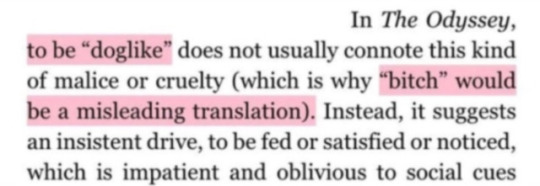

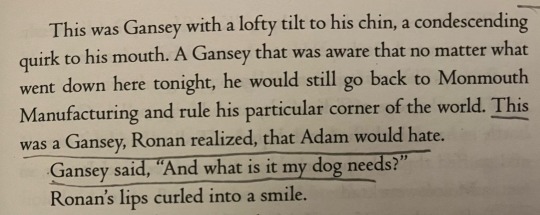
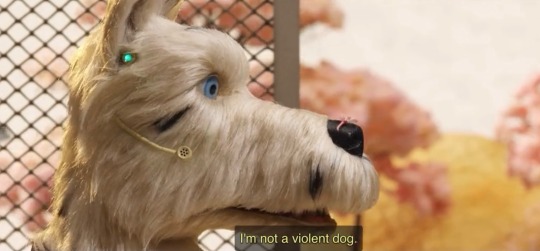
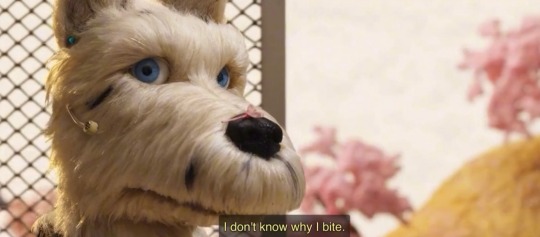
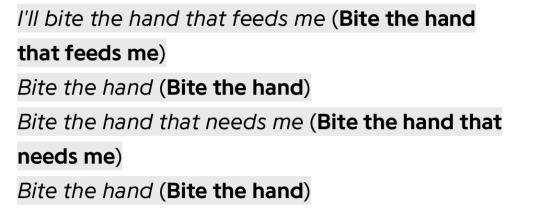
i don’t know why i bite
unknown / tusk - fleetwood mac / gods country - ethel cain / foreword to homer’s odyssey - emily wilson / summer sons - lee mandelo / the dream thieves - maggie steifvater / isle of dogs (2018) / bite the hand - boygenius
#mine#web weaving#dog motif#fleetwood mac#tusk#isle of dogs#summer sons#the dream thieves#the raven cycle#ethel caín#boygenuis#lee mandelo#words words words#dark academia#ronan lynch#gansey#richard campbell gansey iii#andrew blur
2K notes
·
View notes
Text
They're so orange cat and black cat duo coded


#They're like two cats that start playing one second and then fistfighting the next#i wanna give them a duo name combining their motifs mmmhjhjg i love those#I have a few suggestions already if anyone is interested..#fionna and cake#adventure time fionna and cake#fionna and cake fanart#fionna campbell#marshall lee#adventure time fionna#fionna the human#marshall lee the vampire king#adventure time marshall lee#adventure time#adventure time fanart
219 notes
·
View notes
Note
Hello again, Dr. Reames. This post about the hero's journey across world cultures but especially in Ancient Greece has been going viral on tumblr. As both a writer of fiction set in the ancient world and an academic, do you think the hero's journey holds any merit? Especially in regards to the Illiad?
So first, thank you for that link and sorry for the delayed reply. I enjoyed reading the post, and agree with her for the most part, but there is a very useful comment (I’m not sure I’d quite call it a rebutting) from Ian Robinson in the notes. His reply offers several useful points about, et al., masterplots and correctives to her take on Campbell, which is a bit narrow, although the Frazier/Campbell/Jung approach to myth has long been recognized as problematic, beginning with Levi-Strauss. So I’d suggest that those who read her post also read his comment, as he gives some good additional bibliography. There are some other good comments, but I’d specifically point to that one. Unless I really misremember Campbell, I don’t think he’s suggesting the Hero’s Journey is the only sort of myth out there. That would be oversimplifying him and creating a stick-man argument, which is where I might ding her analysis.
Walter Burkert (and his students, et al.) have noted that similarity in myths may owe more than a bit to some basic similarities in human experience due to human biology. So, we get a goodly number of coming-of-age stories/myths and accompanying rites of passage. Similarly, marriage is another commonality. There’s only one culture that doesn’t have marriage (if my anthro class memories serves); but what “marriage” entails, and who may marry whom, varies quite a lot over cultures. Death and funerals/mourning are another commonality strongly hedged by culture-specific details, along with birth and fertility rites. We can include also anniversary and commemorative rites, feasting and fasting, even water rituals. These all cross the globe in myth and religion. Thus, our very humanness produces similarities of experience, although details are shaped by culture.
Additionally, throughout history, human beings have tended to look for points of commonality when facing difference—a purchase to grab onto, if you like. We’ve been doing this for millennia, right down to: “Your god seems like my god, just with a different name.” Difference is occluded to focus on the similarity.
I don’t think that’s a bad thing. It promotes connection…and empathy. It’s only problematic when difference is not just ignored but erased and replaced. That happens too. The Greeks (and later Romans) were notorious for ignoring other people’s names and categories in favor of their own… but so were the Egyptians, and the Chinese. This is not simply a white Western/European fault. It’s a Center-Periphery phenomenon. And it may be the height of white Western/European privilege to assume they’re the only ones guilty of doing it!
All that said, we do find some common … themes? ... across myths. Trickster figures, for instance—perhaps because they make us laugh. But a culture that doesn’t have one isn’t “lacking,” nor do all tricksters look/act the same. Humor can be a very cultural thing. That’s just one example of a “semi-universal” mythical motif.
So, in short, I don’t see a problem with utilizing the Hero’s Journey as a useful frame in storytelling. But I would say that we may need to learn new stories too, as writers.
My current WIP (work-in-progress) is a 6-volume epic fantasy that turns the conquest narrative on its head. One (of the two) main characters transforms from “Master of Battles” to “Mother of Peace.”
Writing it has presented me with some narrative-arc struggles, most notably writing “battles that aren’t.” E.g., an expected battle that doesn’t come to pass/is short-circuited in some way. I mean to challenge the notion that “glorious conflict/combat” is a necessary conclusion for a story arc. Yet that runs the risk of annoying readers who complain of bait-and-switch. Nonetheless, the point IS that a peaceful solution may be the true victory. How to do that involves maintaining enough narrative TENSION even if battle isn’t the resolution of that tension.
That’s a different sort of story, and entails bucking millennia of narrative expectations. Of course there are other forms of story (metaplots) that don’t even involve a (big) battle at all, but I’m specifically trying to subvert that one. That means I must rethink dramatic tension. (Hopefully successfully.)
In any case, I offer it as an example of the struggle any storyteller faces when swimming against the current of reader/listener/viewer expectations. Especially when those expectations are formed by the freight of human storytelling tradition. We are “programmed,” if you will, to expect certain things out of any given plot arc. One ignores that—or in my case, deliberately flaunts it—to one’s peril.
#asks#Joseph Campbell#The Hero with a Thousand Faces#mythic motifs#metaplots#writing tools#Master of Battles#Carl Jung#Walter Burkert#uber-myths don't exist but commonalities might#mythic scholarship
9 notes
·
View notes
Text
Fionna has prominent buck teeth. Fan artist you know what to do
#this episode and previous scenes show her teeth align with her bunny motifs#so like get to toothing art boy and or girl#fionna campbell#fionna the human#fionna and cake#adventure time
25 notes
·
View notes
Text

something of a motif in today’s used bookstore finds
#the motif is: The Water#I’m always about The Water#but I get even more so when the winter rains start#and it was pouring rain today#anyway I just thought it was funny that the books that caught my eye#were three different books about aquatic animals#which I didn’t consciously go into the bookstore looking for#had a really nice short conversation about salmon with the cashier#told him about the creek in Campbell where the salmon migrate through the city#he gave me a good book recommendation for a book about salmon conservation
5 notes
·
View notes
Text

X-Men 1 Variant / Published: 2017 / Artist: J. Scott Campbell
42 notes
·
View notes
Text
🌘 THE ECLIPSE a UNION of OPPOSITES 🌒
an analysis of the mythic motifs in dune part two through the lens of mythologist joseph campbell, and some predictions for dune messiah
• Divine Couple
• Death and Rebirth
• Redemption Through Divine Union
• House of Atreus
• Lunar-Masculine / Solar-Feminine
• Goddesses
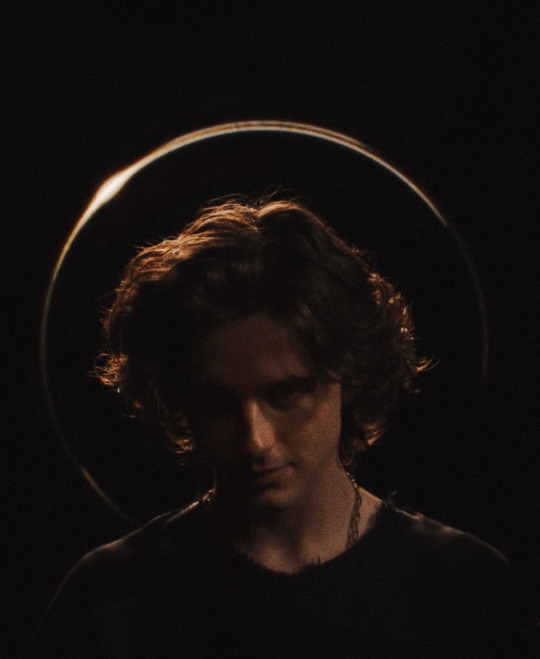
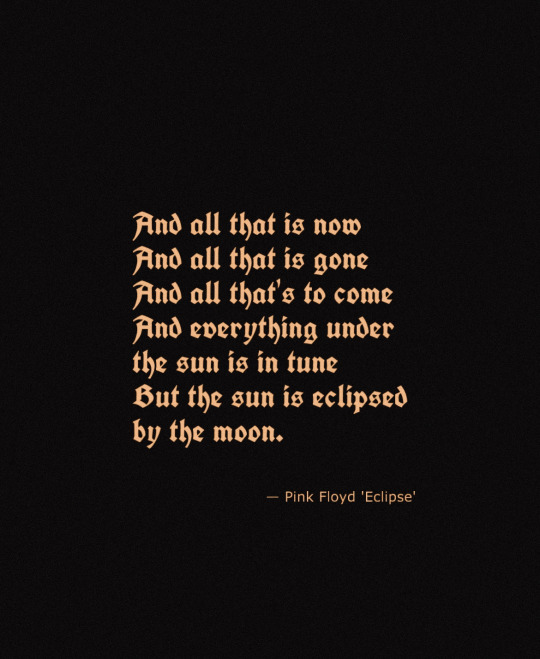
THE ECLIPSE
This motif has been connected to Dune since the first film’s promo, especially with the concluding track of Dark Side of the Moon accompanying the initial trailer. Some fans believed this theme had been dropped as it wasn’t very present in the first film. However the eclipse continued throughout the promo of the second film. This was because Part Two is where the real pay off is, already in the first 10 minutes.
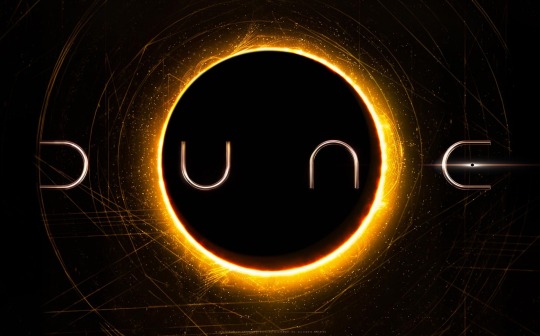
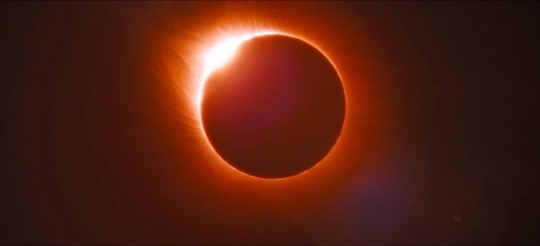
This concept is intrinsic to Denis Villeneuve’s adaptation. Since the first film I have been saying that Dune embraces the Lunar-Masculine (Paul) and Solar-Feminine (Chani). However beyond just that, Dune: Part Two showcases multiple pairings of the lunar-solar dynamic.
But before we jump into that, let’s establish the meaning of an eclipses in general mythology. Typically they are a symbol of death and renewal. Common interpretations have a beast devouring the sun, or a celestial couple evading or pursuing one another. These interpretations are consistent over and again in Dune.
What we will see, is that the greater Imperium holds a Solar-Masculine identity, but when it comes to Arrakis there is a distinct shift to the Solar-Feminine archetype.
PAUL as the MOON
There are an innumerable amount of connections. Bull motifs are reoccurring throughout the first film, where he grew up on a water world. After all, the moon is associated with the tides. He takes the name Muad’Dib, and one of the moons of Arrakis has the icon of a Muad’Dib aka Desert Mouse visible on its surface. And ultimately, Paul experiences rebirth in Part Two.
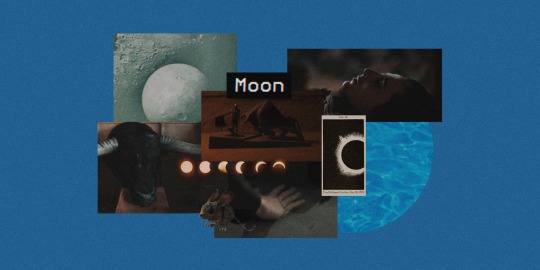
The bull is a figure of sacrifice which aligns very well with the lineage of House Atreides which can be traced back to the House of Atreus and it’s curse of familial murder, betrayal and symbolic consumption. Sacrifice of the children in each new generation.
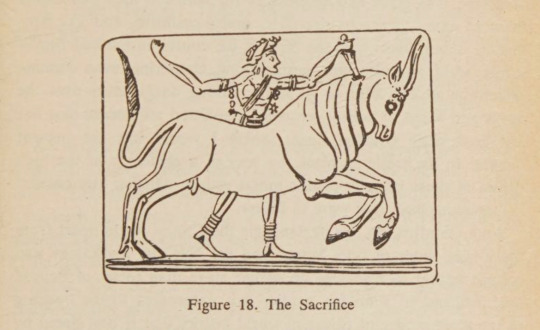

IRULAN and the GOLDEN LION THRONE
Starting here is a good place, because it shows the transition of the Solar-Masculine of the wider Imperium toward the Solar-Feminine of Arrakis. Irulan Corrino of House Corrino is the daughter of Emperor Shaddam who sits on the Golden Lion Throne. His reign is coming to a close as Paul rises on Arrakis, and with no male heirs Irulan his eldest is the successor destined for marriage. In this way Irulan becomes the embodiment of the Lion Throne, and her determination in Dune Messiah to produce Paul’s heir becomes clear. That function of the Queen Mother and how that feeds back into the Solar-Masculine as the King becomes tied to the lion and the throne once more.
In particular I would say her story is best reflected in the myth of the goddess Cybele who falls for Attis and when he falls for a mortal girl Cybele plots betrayal. Something for which she later feels guilt and tries to make amends for (Children of Dune).


PAUL and JESSICA
Their dynamic is incredibly complicated, but I think the opening of the film during the eclipse sums it up very well. You follow the path of the moon as it covers the sun, and as it meets its full coverage Paul is the one taking action in the fight against the Harkonnen. However as the moon passes by and the sun takes over again, Jessica emerges to save Paul’s life.
This was intentional by the filmmakers, as is revealed in the Art and Soul of Dune Part Two, DP Greig Fraser identified the exact time, date and location in order to shoot the sun as it appears directly behind Rebecca Ferguson.

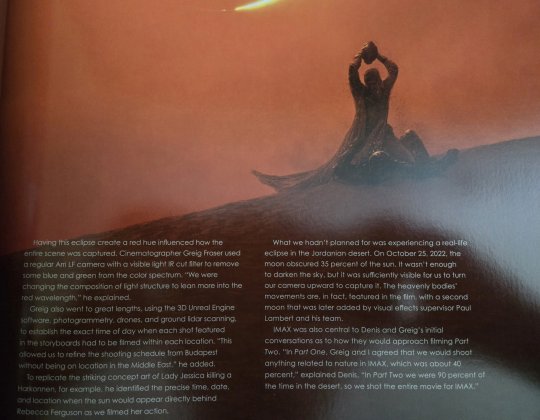
Jessica represents the sun on Arrakis, and in this scene we see how the moon dies into the sun to be reborn in their dynamic. It also lines up with motifs of the sun goddess giving birth to the sacrificial bull. Sacrifice toward this death and rebirth.
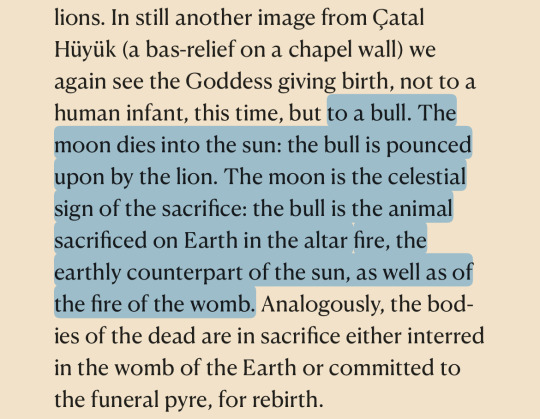


What we see is the separation of mother and son that brings them back together in the same place. Paul takes the lead and rejects his mother’s influence, but she leads him toward the death and rebirth he must experience, and this brings them back to a common understanding.

This is also why having Jessica sit the Atreides “throne” in the finale instead of Paul (who did so in the book) makes mythic sense. Because again we return to the Solar-Feminine mother as the throne, and her son as king. But in a different context here then what Irulan aspires toward.
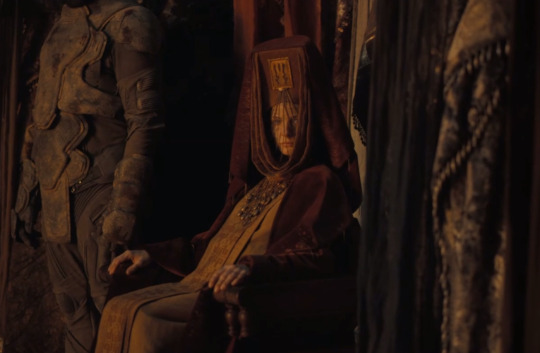
A SYMBOLIC UNION aka THE BULL SACRIFICE
The House Harkonnen family seal in the books is the griffin, which makes his introduction in a gladiator arena killing Atreides even more appropriate. Feyd’s birthday is also associated with a solar event. Because ultimately Feyd is the matador and Paul is the bull.

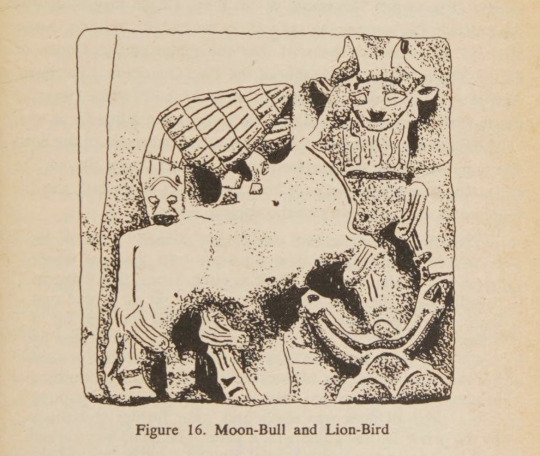
What works so fantastically about the dual, is how it is bathed in the sunlight. After all, the sun figure (day) is facing off against the moon (night) figure in this sequence. Plus the bull was the eventual demise of Paul’s grandfather who was a matador. This takes place at sunrise, and it’s a dual for the throne, where whoever is victorious inherits the Golden Lion Throne. The

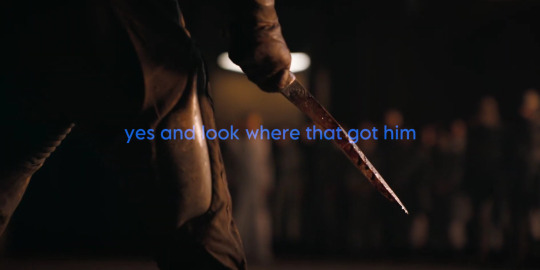
Denis specially describes the dual as a symbolic union, and it works on multiple layers. This bull sacrifice, is in essence the quote from part one of “when you take a life you take your own” so Paul killing Feyd is penetration, intimacy, it is rebirth.

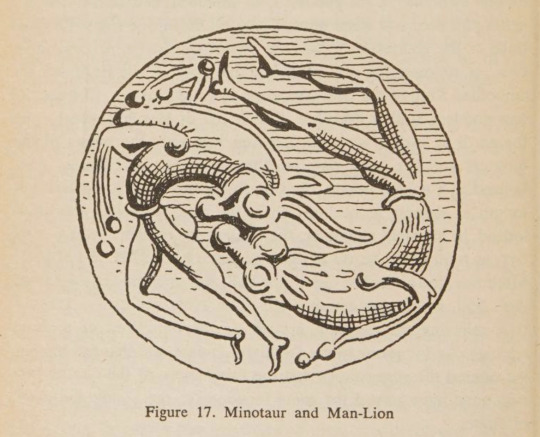
It is also reminiscent of how Campbell describes the sun-moon twins of Navajo myth:
The two, Sun-child and Water-child, antagonistic yet cooperative, represent a single cosmic force, polarized, split, and turned against itself in mutual portions. The life-supporting sap-power, mysterious in the lunar rhythm of its tides, growing and decaying at a time, counters and tempers the solar file of the zenith, life- desiccating it its brilliance, yet by whose heat all lives.
— Joseph Campbell's Commentary from "Where the Two Came to Their Father: A Navaho War Ceremonial" by Jeff King and Maud Oakes
DESERT SPRING TEARS and DIVINE UNION
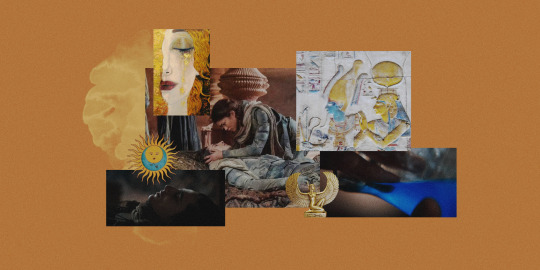
There is a section in the Dune Encyclopedia that talks about the foundation of the Bene Gesserit beliefs. In particular the teachings of a certain ancestral memory personality, called Inanna (yes that is the name of the Sumerian goddess who was also in a divine union caught between life and death glad you asked) about the Kwisatz Haderach. It basically establishes that the entire premise of the Bene Gesserit and the Kwisatz Haderach is in essence the Divine Couple.

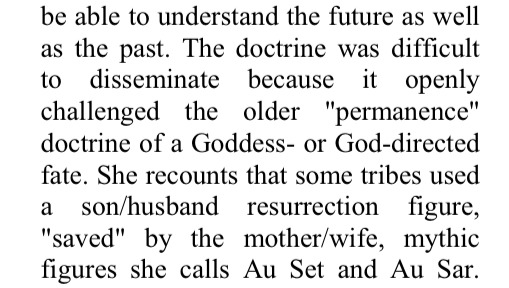
It specifies two mirrored dynamics the son saved/resurrected by the mother and the husband saved/resurrected by the wife. Inanna called them Au Set and Au Sar. The Kemet names for Isis and Osiris. The idea of the Bene Gesserit would have this as the mother of the KH, and the Corrino princess he would have married. But with things thrown off course, it represents outside their control.
In Dune, we see it between Paul and Chani. Like Isis who has the solar disc and Osiris who is tied to water and death, her lover has died and she is the one to revive him.
Furthermore the concept of mythical tears can be found in the goddess Freya (who arguably is compatible with sun-goddess motifs) who weeps when her husband Odin is lost to her.
But perhaps most compatible—the healing tears of a phoenix. A bird archetype similar to Isis as bird. This is where the yin-yang dynamic of Chani and Paul becomes most apparent, since the serpent is synonymous with the bull and therefore Paul who “makes peace with Shai-Hulud” encompasses the dragon (yang) as a complement to Chani’s phoenix (yin).
In the behind the scenes of Dune Part Two, the Maker Temple is said to be designed like the infinity symbol with the two circles (one of sand and one of water). Sand being death and water being life, but also the reverse. As the sandworm thrives in the sand but is drowned in the water. And Paul is stuck between life and death, literally laying between both pools, when Chani comes to resurrect him.

This film literally has three kisses. Their first kiss when Chani says she will show him the way of the Fremen, their second kiss on screen when she says he will never lose her before going South, and the third symbolic kiss of life.
This marriage/death is also foreshadowed in Paul’s visions in Part One when Chani kisses him and then stabs him. Which is where we return to Isis and Osiris because Paul’s death state (dying again as we established, after killing Feyd, similar in a way to Set and Osiris) is where we will eventually get the twins Leto II and Ghanima with Leto II being the Horus in this equation.

As the Pink Floyd lyrics say, the sun is eclipsed by the moon and this is captured in the heartbreak Chani feels over losing Paul and losing her people to the Lisan al Gaib. The Fremen way of life has been eclipsed and over taken by the Atreides and the Bene Gesserit. Here we see more of the concept of that beast devouring the sun from the beginning, verses the celestial couple dynamic.
Chani leaving the residency chamber is also reminiscent of certain myths like Amaterasu going into hiding, or the Inuit folktale about the sun goddess fleeing her moon god brother/lover who pursues her.
However the Dune Encyclopedia also talks about the concept of redemption (which is why in the film Mohiam asks Margot if Feyd is capable of redemption) of the “mate savior”. The Kwisatz Haderach. They would bring about a release from bondage through redemption and rebirth.

Which is relevant to the dynamic of Paul and Chani in Dune Messiah for Denis, because he has said Paul is going to be looking to save his soul in part three, and how Paul and Chani come back together won’t just be explained away off screen between films. It will be that continued cycle of rebirth, through redemptive love. Rebirth as a whole in Dune is worth its own discussion, since all the different Jungian descriptions of it can be found within this universe.
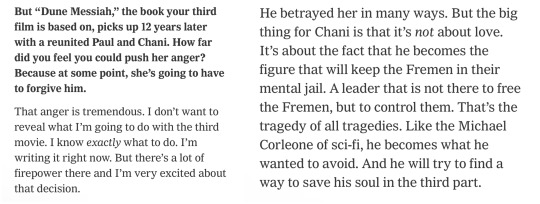
CONCLUSION
The eclipse, a lunar-solar dynamic representing the union of opposites, is very significant in Dune Part Two and sheds a lot of light onto what we can anticipate next in Dune Messiah, particularly in regards to the central romance between Paul and Chani and the changes Denis has made from book to screen.
#joseph campbell#dune part two#dune#dune 2#dune movie#dune 2024#divine union#mythic romance#mythology#eclipse#paul atreides#paul x chani#chani kynes#bene gesserit#goddesses#inanna#goddess#lunar masculine#solar feminine#house Atreus#curse of Atreus#redemption#timothée chalamet#zendaya#feyd rautha#austin butler#lady jessica#rebecca ferguson#florence pugh#irulan corrino
140 notes
·
View notes
Text
Zine Month : The returning of the returns
Ttrpgs really are an addiction..... Quitting ? NEVER!
A 3rd selection of games here we go God why do so many games end in the next 7 days ? Oh wait end of February, yeah that tracks...
OMEN
By Spencer Campbell

yeah, get surprised, a game by one of my fav game designers. A One-Shot game about defying fate. A game where you make all your rolls at the start, and then use them across the session however you want. The game designer in me is intrigued.
Funded, ends circa 26 Feb ( damn you time zones)
StarLee Davidson
By 9th Level
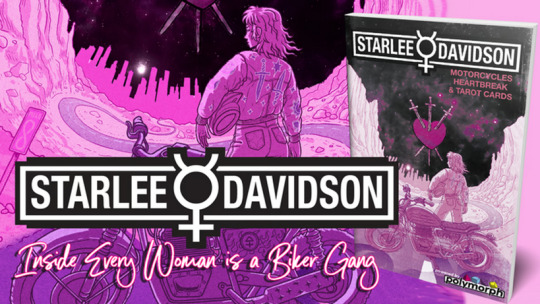
A game with tarot motifs, another surprise. Anyway every woman contains an entire motorcycle girl gang. Messy romances and motorcycles. The inner voices of a woman called Starlee Davidson
Funded, ends around 28 Feb
Development Hell
By Tanuki Games
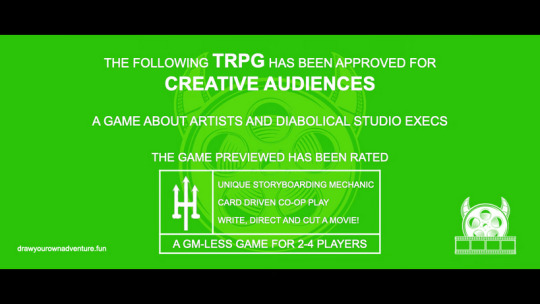
I will just put the tagline and you tell me that this is not an interesting game "Escape from the creative purgatory of trying to make the 'perfect' film while dealing with the horrors of terrible studio demands"
Funded, ends around 28 Feb
O Patron Mine
By Meghan Cross
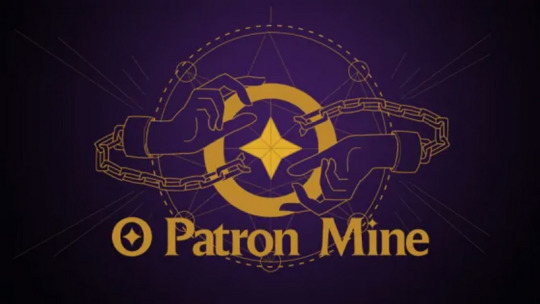
A Solo game with ... Tarot cards, are you surprised yet ? Let's play our inner Faust, making a contract with a powerful entity? A different patron for each major Arcana and a two player variant, I love a solo game with replayability.
Funded, ends around 28 Feb
Knight Forlorn
By Blackfisk Publishing
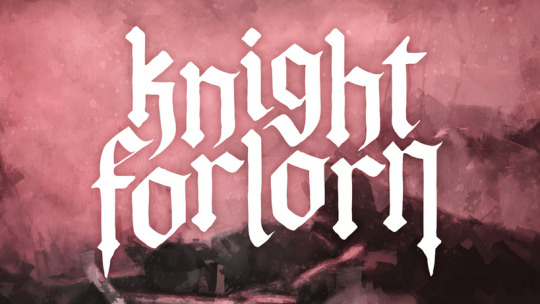
Since Elden Ring came out, we got a lot of soulslike game, didn't we ? I love myself a good Gmless game. And I also love a game from Europe, so much easier to import.
Funded, ends around 28 Fev
Horse Majeure
By Tom Lavery
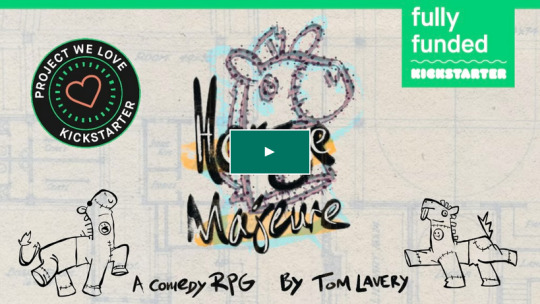
Just two person hanging out in a horse costume looking for a delicious apple.
Funded, ends around 1 March
Wiki Articles Are Wizards [citation needed]
By Ben Meadows
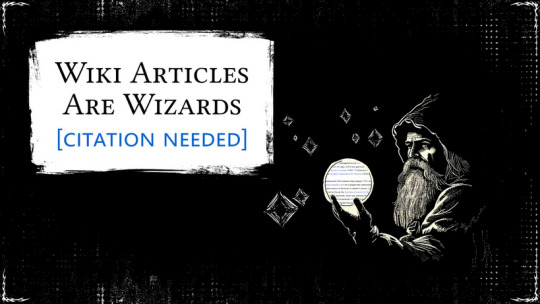
This..is...how do I... You like spending hours reading wiki articles ? Congratulations you are a wizard now, it's time for a wizard off with your friends. Really, transform wiki articles into wizards, obsessive, weird, erratic, unsettling wizards
Funded, ends around 1 March
Selene Oscure
By Maison Nebuleuse
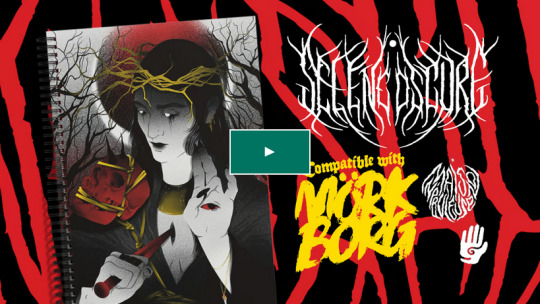
A Mork Borg game from France. In a world of darkness and ruins, you need to stop the moon from falling. Wait no, not the moon, the dark moon. Also find the gods that abandoned the world and make them pay for their betrayal. A good killing gods game.
I like these guys, please help them.
Not funded yet, ends 1 March
16 notes
·
View notes
Text

"Life lives on life. This is the sense of the symbol of the Ouroboros, the serpent biting its tail. Everything that lives lives on the death of something else. Your own body will be food for something else. Anyone who denies this, anyone who holds back, is out of order. Death is an act of giving."
~Joseph Campbell
•The Ouroboros or uroborus (/ˌ(j)ʊərəˈbɒrəs, uːˈrɒbərɒs/) is an ancient symbol depicting a serpent or dragon eating its own tail. Originating in ancient Egyptian iconography, the ouroboros entered western tradition via Greek magical tradition and was adopted as a symbol in Gnosticism and Hermeticismand most notably in alchemy.
The Ouroboros represents the perpetual cyclic renewal of life and infinity, the concept of eternity and the eternal return, and represents the cycle of life, death and rebirth, leading to immortality, as in the Phoenix.
§In Alchemy:
In alchemy, the Ouroboros is a sigil. Swiss psychologist Carl Jung saw the Ouroboros as an archetype and the basic mandala of alchemy. Jung also defined the relationship of the Ouroboros to alchemy:
"The alchemists, who in their own way knew more about the nature of the individuation process than we moderns do, expressed this paradox through the symbol of the Ouroboros, the snake that eats its own tail. The Ouroboros has been said to have a meaning of infinity or wholeness. In the age-old image of the Ouroboros lies the thought of devouring oneself and turning oneself into a circulatory process, for it was clear to the more astute alchemists that the prima materia of the art was man himself. The Ouroboros is a dramatic symbol for the integration and assimilation of the opposite, i.e. of the shadow. This 'feed-back' process is at the same time a symbol of immortality, since it is said of the Ouroboros that he slays himself and brings himself to life, fertilizes himself and gives birth to himself. He symbolizes the One, who proceeds from the clash of opposites, and he therefore constitutes the secret of the prima materia which [...] unquestionably stems from man's unconscious."
§ In Antiquity:
The Ouroboros often symbolizes self-reflexivity or cyclicality, especially in the sense of something constantly re-creating itself, the eternal return, and other things such as the phoenix which operate in cycles that begin anew as soon as they end. It can also represent the idea of primordial unity related to something existing in or persisting from the beginning with such force or qualities it cannot be extinguished. While first emerging in Ancient Egypt, the Ouroboros has been important in religious and mythological symbolism, but has also been frequently used in alchemical illustrations, where it symbolizes the circular nature of the alchemist's opus. It is also often associated with Gnosticism, and Hermeticism.
§In Egypt:
The first known appearance of the ouroboros motif is in the Enigmatic Book of the Netherworld, an ancient Egyptian funerary text in KV62, the tomb of Tutankhamun, in the 14th century BC. The text concerns the actions of the god Ra and his union with Osiris in the underworld. In an illustration from this text, two serpents, holding their tails in their mouths, coil around the head and feet of an enormous god, who may represent the unified Ra-Osiris. Both serpents are manifestations of the deity Mehen, who in other funerary texts protects Ra in his underworld journey. The whole divine figure represents the beginning and the end of time.
The ouroboros appears elsewhere in Egyptian sources, where, like many Egyptian serpent deities, it represents the formless disorder that surrounds the orderly world and is involved in that world's periodic renewal. The symbol persisted in Egypt into Roman times, when it frequently appeared on magical talismans, sometimes in combination with other magical emblems. The 4th-century AD Latin commentator Servius was aware of the Egyptian use of the symbol, noting that the image of a snake biting its tail represents the cyclical nature of the year.
§In Greece:
Plato described the Ouroboros as the first living thing a self-eating, circular being—the universe as an immortal, mythologically constructed entity:
"The living being had no need of eyes because there was nothing outside of him to be seen; nor of ears because there was nothing to be heard; and there was no surrounding atmosphere to be breathed; nor would there have been any use of organs by the help of which he might receive his food or get rid of what he had already digested, since there was nothing which went from him or came into him: for there was nothing beside him. Of design he created thus; his own waste providing his own food, and all that he did or suffered taking place in and by himself. For the Creator conceived that a being which was self-sufficient would be far more excellent than one which lacked anything; and, as he had no need to take anything or defend himself against any one, the Creator did not think it necessary to bestow upon him hands: nor had he any need of feet, nor of the whole apparatus of walking; but the movement suited to his spherical form which was designed by him, being of all the seven that which is most appropriate to mind and intelligence; and he was made to move in the same manner and on the same spot, within his own limits revolving in a circle. All the other six motions were taken away from him, and he was made not to partake of their deviations. And as this circular movement required no feet, the universe was created without legs and without feet.
§In Gnosticism:
the ouroboros the serpent biting its tail symbolized eternity and the soul of the world. The Gnostic text Pistis Sophia describes the disc of the sun as a 12-part dragon with his tail in his mouth.
§ In Norse Legend:
In Norse mythology, the ouroboros appears as the serpent Jörmungandr, one of the three children of Loki and Angrboda, which grew so large that it could encircle the world and grasp its tail in its teeth. In the legends of Ragnar Lodbrok, such as Ragnarssona þáttr, the Geatish king Herraud gives a small lindworm as a gift to his daughter Þóra Town-Hart after which it grows into a large serpent which encircles the girl's bower and bites itself in the tail. The serpent is slain by Ragnar Lodbrok who marries Þóra. Ragnar later has a son with another woman named Kráka and this son is born with the image of a white snake in one eye. This snake encircled the iris and bit itself in the tail, and the son was named Sigurd Snake-in-the-Eye.
The famous Ouroboros drawing from the early alchemical text The Chrysopoeia of Cleopatra dating to 2nd century Alexandria encloses the words hen to pan, "one is the all". Its black and white halves represent the Gnostic duality of existence. As such, the Ouroboros could be interpreted as the Western equivalent of the Taoist Yin-Yang symbol.
The Chrysopoeia Ouroboros of Cleopatra the Alchemist is one of the oldest images of the Ouroboros to be linked with the legendary opus of the Alchemists, the Philosopher’s Stone.
As a symbol of the eternal unity of all things, the cycle of birth and death from which the alchemist sought release and liberation, it was familiar to the alchemist/physician Sir Thomas Browne. In his A Letter to a Friend, a medical treatise full of case-histories and witty speculations upon the human condition, he wrote of it:
"...that the first day should make the last, that the Tail of the Snake should return into its Mouth precisely at that time, and they should wind up upon the day of their Nativity, is indeed a remarkable Coincidence,"
§In Kundalini Yoga:
Ouroboros symbolism has been used to describe Kundalini energy. According to the second century Yoga Kundalini Upanishad, "The divine power, Kundalini, shines like the stem of a young lotus; like a snake, coiled round upon herself she holds her tail in her mouth and lies resting half asleep as the base of the body" (1.82). Another interpretation is that Kundalini equates to the entwined serpents of the caduceus of the Greek god Hermes, the entwined serpents representing divine balance in the west or, esoterically, human DNA.
§In South American lowlands
It is a common belief among indigenous people of the tropical lowlands of South America that waters at the edge of the world-disc are encircled by a snake, often an anaconda, biting its own tail.
#shamanism#shaman#shamanic#spiritual#ayahuasca#shaman journey#altered consciousness#healing#motivation#self healer
28 notes
·
View notes
Text
Ada getting tired of seeing all the yellow ducks and telling Lucifer he needs to change up his duck designs.
“Too many yellow ducks, goony. You’re ignoring the Mallard, the Campbell, the Rouen. Would you let our Little Oz live in a world not knowing about the Appleyard or the Aylsbury?”
just like that, Oz’s nursery is full to the brim of different duck breed motifs. And Lucifer starts branching out in his duck designs — making different variations that he gets excited telling Ada and Charlie and his friends about.
Meanwhile, Ada’s sipping her smoothie, smirking, because she got what she wanted.
10 notes
·
View notes
Text
#On this day
On October 18, 1926, an American rock musician, singer, guitarist, songwriter, one of the founders of rock and roll was born
Chuck Berry
🎧🎸🎤✌HAPPY BIRTHDAY !!! 🎂🎈






Here are some of the most striking examples of Berry's legacy — from the cover versions of his songs that overshadowed the original to the recognized classics of cinematic soundtracks.
Chuck Berry's Legacy
The Beatles played a cover of this Chuck song back in their early shows in Hamburg. And at the end of 1964, it was decided to record a studio version of the song for the record "Beatles for Sale" (on which there was room for several more covers). The lead vocals here are performed by John Lennon, whose vocals sounded much louder and more dynamic than Berry's voice. In 1976, this song was included in The Beatles' Best Things album of the same name.
youtube
An eight-minute reworking of Chakov's "Beethoven" appeared on the 1973 album ELO 2, including an intro from the legendary Fifth Symphony, which organically transformed into the original motif of "Roll Over Beethoven". Subsequently, this song became one of the business cards of E.L.O. and often became the final one at their performances.
youtube
The movie "Back to the Future" gave this song a second life. Johnny B. Goode was performed by Marty McFly and The Starlighters at the school ball on November 12, 1955. Marty called this song a classic and told the band to play along with him in a bluesy way. Neither the band nor the audience had ever heard anything like this before, and Marvin Berry (the same musician who injured his arm when saving Marty from the trunk) called his cousin Chuck, letting him listen to the song on the phone, calling it a "new sound" (a vivid example of a "time loop"). In the end, everyone present was shocked by Marty's stage behavior to such an extent that some even covered their ears.
In fact, the Johnny B. Goode song for the film was performed by Mark Campbell. The guitar solo was played by Tim May.
"It looks like you guys aren't ready for this yet. But your kids will definitely like it!" — Marty McFly.
youtube
1994 brought this song to the peak of popularity again — the reason for this was Quentin Tarantino's film "Pulp Fiction". It was to the sounds of Chuck Berry's composition, released 30 years earlier, that Vincent Vega and Mia Wallace, performed by John Travolta and Uma Thurman, danced twist at the dance competition. Tarantino said that words like "Pierre" and "Mademoiselle" gave this scene the unique charm of France in the 50s
youtube
It was Chuck Berry who introduced this element of the stage behavior of guitarists. Even as a child, he entertained his relatives with similar movements, and in 1956, at a concert in New York, he first presented the "duck walk" to the general public. As he later told Rolling Stone in an interview, he was just trying to distract the audience's attention from his rumpled silk suit. The audience liked it and Chuck continued to do it over and over again.
Chuck's most famous follower in the "duck" business is Angus Young, the lead guitarist of AC/DC.
youtube
"The people who come to listen to me are happy because they remember the best times."👑
#on this day#chuck berry#happy birthday#music#my music#music love#musica#history music#spotify#rock music#rock#rock photography#my spotify#the beatles#E.L.O#electric light orchestra#ac dc#rock and roll#rhythm and blues#Youtube#Spotify
10 notes
·
View notes
Text
Thinking about it bendy and the ink machine literally predicted needy streamer overload because we have a character called Alice Angel and one of her main goals is to be a beautiful angel. This lines up with Kangel/Ame's goal of being an internet celebrity, during the game she constantly says that she's "cute", which again aligns with Alice's goal. Alice also has an angel motif, which Kangel also has. A little stretch but they also share a small portion of the digital motif, because Alice angel is an animation (or at least originated from an animation), but since the game is set in the 60-70's it's hard to say if she is really a "digital angel", unlike NSO which is set in a modern setting, Kangel isn't an animation, but a streamer. Which is basically the same thing because it's both entertainment. And also, alice's voice actor (Susie campbell) said she always felt incredibly connected to the character Alice angel, and liked it when people called her Alice instead, which is a parallel to Ame's identity conflict between herself an Kangel.
Therefore, bendy and the ink machine predicted nso.
6 notes
·
View notes
Text
On Not Talking About Jesus
A homily on Mark 7:31-37 preached on the Friday after the Fifth Sunday after the Epiphany at Western Theological Seminary, Holland, Michigan
Some of you who are around my age, who went through your deconstruction experience a couple of decades ago or more, may remember a blog called Jesus Needs New P.R. Even if you didn’t read it closely, the title was a catchy summary of how you might have felt: Jesus has a public relations problem. He’s compelling and interesting and compassionate and inspiring, but His representatives — the church bureaucrats who pontificate about Him from pulpits, the politicians and pundits who use His name to promote their odious causes, the bigots who claim to follow Him but leave a trail of hurting people in their wake — are the problem.
Even if your politics differ from mine, each one of us can identify with these sentiments, at least some of the time. Have you ever winced when you saw a picture of Jesus draped in an American flag? Have you ever felt tempted to take “Christian” off your social media profile when someone invokes Jesus to support some movement or cause that you find abhorrent? An Australian New Testament scholar, Constantine Campbell, recently published a book called Jesus v. Evangelicals in which he voiced what a lot of us intuit: “The evangelical movement must be refashioned in Jesus’ image, rather than cast Jesus in its image.”
It's this propensity to cast Jesus in the image we want that explains a strange feature of our Gospel reading this morning. Jesus is in region of the Decapolis, and even in this faraway place, word has spread that he is a healer, a wonder-worker. So a group of people bring a friend of theirs whose hearing and speech are impaired. They want a miracle, and Jesus obliges. He ushers the man away from the crowd, so that it’s just he and Jesus. (Maybe Jesus is offering dignity to the man with this privacy, refusing to make him a spectacle.) In any case, He puts His fingers in the man’s ears, and He spits and touches the man’s tongue. He lifts his eyes up to heaven and sighs and says in Aramaic, “Ephphatha,” which means, “Be opened.” “And his ears were opened, his tongue was released, and he spoke plainly.” And then comes the strange aspect of the story: “Then Jesus ordered them to tell no one.”
This happens again and again in Mark’s Gospel: Jesus charges His followers — and even demonic spirits — not to talk about His miracles, not to talk about what He does and who He is. Scholars usually refer to this as the motif of the “messianic secret” and then try to offer some sort of interpretation of it. Why would Jesus not want the good news about Him to be talked about? Why would He not want His fame to spread, so that more and more people could put their faith in Him?
One German scholar referred once to the Gospel of Mark as essentially a passion story, with a long introduction. And I think that’s our clue to the meaning of Jesus’ secrecy. Mark is telling a passion story — a story of Jesus’ gruesome execution and mysterious resurrection, which Jesus interprets as His gift of Himself to the world. And Mark knows that there is potential for misunderstanding Jesus at every turn. We may hear about one of His miracles and decide that He is basically a genie who can grant our wishes. We may hear about Him performing exorcisms and decide that He is available to fight our favorite enemies. And Mark’s point is that if we do that, we fundamentally misunderstand who Jesus is and what He aimed to achieve. Mark’s claim is that Jesus came for one overriding purpose: not to conform to our agendas and expectations but to give His life as a ransom for us, to rescue us from our self-absorption, our cruelty, our enslavement to sin and death. He came for love. He came to lay down His life for His enemies, to make His enemies His friends, and friends to one another.
And this is why, I think, Mark has Jesus refusing the boxes we want to put Him in. “Don’t domesticate Me like that,” Jesus seems to say. “Don’t use Me for your pet projects, your private theological agendas, your political ambitions.” As the Anglican priest and scholar Austin Farrer writes, “Christ does not encourage the spreading of ready-made formulae divided from living act, whether in the form of rumour or doctrine… Messiahship is not taught even to the initiate as a thing by itself, but as that which death and resurrection will express.” We understand the messiahship of Jesus, and the miracles and teachings and aims of Jesus, only when we follow Him all the way to the cross and to the grave and then hear the mysterious young man at His empty tomb telling us that He has gone on ahead of us.
Friends, we are about to enter the season of Lent, which is a time when Christians try to clear away some of the clutter that keeps us from seeing Jesus and being surprised by Him. By quieting ourselves and voluntarily letting go of some of our usual methods of coping with stress and anxiety, we try to see past the P.R. about Jesus. We open ourselves to considering whether we have a distorted picture of who Jesus is and what He wants with us and from us and for us. And perhaps we also keep quiet about Him for a bit. We don’t rush in to offer our preferred picture of who He is. Instead we listen, we watch, we wait. And we try to prepare our hearts for that great and holiest of weeks when we will keep vigil with Jesus as He goes to the cross and triumphs over death. Only then may we dare to speak about who He is for us.
Amen.
28 notes
·
View notes
Note
Pairing: Katarina x Maria Title: Crimson Rivers Feel No Pain
Sequel to "Show Me What Runs Through Your Veins".
If Katarina could use a vampire motif to flirt, Maria could do the same.
A tiny droplet of pomegranate juice was visible on the corner of Katarina's mouth. Maria could either be bold or back off.
She chose the option that the pirates in her personal favorite stories would go for and brushed the drop off with her thumb.
Before she could pull away and finish the maneuver, however Katarina decided to surprise her and catch her wrist, a slight sinister smirk on her face that betrayed a hint of amusement despite the blush on the noblewoman's cheeks.
"Careful, Miss Campbell," she teased, and Maria would have been worried by the return to formality if not for the mischievous gleam in the brunette's eyes as Katarina released her wrist, "Most people wouldn't let someone get this close."
So saying, she gently fixed the collar of Maria's nightgown and left an utterly flustered blonde in her wake.
Having been passing by, Keith shook his head. He highly doubted that Katarina knew just what she'd done to Maria just now. Politically savvy and talented menace she was, and he would not deny her that even before they started acting like the formerly estranged siblings they were, she seemed oblivious to her affect on girls, which the serial flirt had personally found hilarious.
He was definitely going to laugh at Geordo over Katarina seducing Maria the next time he saw the Prince.
6 notes
·
View notes
Text

The sultry 1969 hit single Je T’aime … Moi Non Plus was a four-and-a-half-minute distillation of languid Gallic cool, in which a Frenchman, his voice coarsened by Gitanes, is heard billing and cooing with an ecstatically sighing young Englishwoman over the swirling motif of a baroque organ. That man was Serge Gainsbourg; his companion was Jane Birkin, the actor and singer, who has died aged 76. Though Birkin worked with some of the world’s finest film-makers, including Jacques Rivette and Agnès Varda, she knew that Je T’aime … would be remembered above everything else she did. “When I die, that’ll be the tune they play, as I go out feet first,” she said.
Birkin was 21 when she and Gainsbourg met while starring together in the film Slogan (1969). He was 40, and had previously recorded Je T’aime … as a duet with Brigitte Bardot, only for the actor to withdraw permission for it to be released. Birkin had already starred in a 1965 musical, Passion Flower Hotel, scored by John Barry, whom she married that year at the age of 19 and from whom she was divorced in 1968; he was the father of Kate, the first of Birkin’s three daughters. But it was on the duet with Gainsbourg, she said, that for the first time “somebody thought I had a pretty voice”.
She sang her part an octave higher than Bardot. “It gave it a choirboy side that [Gainsbourg] liked a lot,” she said. Rumor's that the vocal track was recorded under the covers during a moment of intimacy were untrue (the couple were standing at separate microphones in a studio in central London) though they did nothing to harm the mythology surrounding a song that was later condemned by the Vatican. “I just remember thinking it was all terribly funny,” she said.
Among the countries that refused to give the song airplay was Britain, where it became the first banned single to reach the top of the charts, as well as the first non-English-language No 1. It was also the lead track on the 1969 album Jane Birkin/Serge Gainsbourg.
Birkin’s life remained inextricably linked to his. They were together for 11 years, and had a daughter, Charlotte, who became a successful singer and actor. Even after they separated in 1980, he continued to write for her, and she went on performing his songs for the rest of her life.
Far from being an adjunct to Gainsbourg’s legend, she possessed her own style, intelligence and attitude. Her wistful beauty was rendered unorthodox by an eager, gap-toothed smile. Her voice was as bewitching as her face: though she lived in France from 1969 onwards, and spoke French fluently, she never shed her breathy, crisply English accent.
She was born in London to Judy Campbell, an actor who had been a muse to Noël Coward, and David Birkin, who was a lieutenant commander in the Royal Navy and a spy during the second world war. His duties included taking British spies across the Channel to France and bringing back stranded airmen and escaped prisoners of war.
Jane was educated at Upper Chine school on the Isle of Wight. At 17 she starred with Ralph Richardson in Graham Greene’s play Carving a Statue; Greene himself had a hand in casting her. Her screen acting career began with a walk-on part in The Knack … and How to Get It (1965) and a controversial nude scene in Michelangelo Antonioni’s Blow-Up, which she agreed to because Barry had told her she wouldn’t dare.
She had a small role in the Warren Beatty caper Kaleidoscope (also 1966), played a model called Penny Lane in the psychedelic curiosity Wonderwall (1968) and starred with Romy Schneider and Alain Delon in the psychological thriller La Piscine (1969). She got on famously with Bardot when they starred together in Don Juan, or If Don Juan Were a Woman (1973). Gainsbourg directed her in a 1976 film named after their hit song; he cast her as a boyish woman who attracts the attentions of a gay man, played by the Warhol regular Joe Dallesandro.
Birkin was tremendous fun in two star-studded Agatha Christie thrillers, Death on the Nile (1978) and Evil Under the Sun (1982). In the cryptic Love on the Ground (1984), Rivette cast her and Geraldine Chaplin as actors drawn into a playwright’s mysterious world. She appeared in two films, The Pirate (1984) and Comedy! (1987), made by her then partner, Jacques Doillon, with whom she had her third daughter, Lou, also a singer and actor. Jean-Luc Godard directed her in Keep Your Right Up (also 1987), while for Varda she played a woman besotted with a 14-year-old boy in Kung-Fu Master! (1988); the film co-starred Charlotte and featured Lou, and was inspired by an idea by Birkin herself.
In the same year, Varda made her the subject of Jane B For Agnès V, in which the actor performed a variety of specially scripted scenes (in one, she was a Stan Laurel type, in another a cockney mother) interspersed with musings on her life. She received the documentary treatment once again when her daughter directed Jane By Charlotte (2021).
Her two most impressive performances came in Bertrand Tavernier’s These Foolish Things, aka Daddy Nostalgie (1990), in which she was moving as a woman trying to repair her relationship with her dying father (Dirk Bogarde); and La Belle Noiseuse (1991), Rivette’s spellbinding four-hour study of a painter (Michel Piccoli) and his new muse (Emmanuelle Béart), in which Birkin played the artist’s wife and former model, who must deal with the indignity of having her younger self literally painted over.
Later films included Alain Resnais’s musical On Connaît la Chanson (1997) and the Merchant-Ivory coming-of-age story A Soldier’s Daughter Never Cries (1998).
In 2002 Birkin was diagnosed with leukaemia, but by 2006 she had made her directorial debut with the autobiographical family drama Boxes, which she also wrote and starred in, along with Chaplin, Piccoli, John Hurt and her daughter Lou. She appeared in Rivette’s final film, Around a Small Mountain (2009), played herself in Hong Sang-soo’s Nobody’s Daughter Haewon, and was reunited with Tavernier for his comedy The French Minister (also 2013).
Her look had been widely applauded in the 1960s, and seemed never to go out of date. In the 80s Hermès introduced a large and exorbitantly priced leather bag, named “the Birkin” in her honour. Fashion journalists in recent years could still be heard celebrating the “Jane Birkin top”, referring to the white lace dress made famous by her in the late 60s. “Real life was what I was best at,” she told Vogue magazine in 2016. “I didn’t have confidence in movie cameras or on stage. But I did have confidence in what I wanted in real life. If I wanted to be barefoot and wear a mackintosh, I would do it. I didn’t give a hoot.”
It was at 40 that she finally discarded her youthful ingénue image and performed her first live concert: “I cut my hair off like a boy, I wore men’s clothes. I only wanted people to hear the music and words. It was fantastic. And it was so frightening. Serge was there and he kept lighting his cigarette lighter to make everybody put their lighters on.” That show was preserved on her 1987 album, Jane Birkin au Bataclan. She continued singing and recording into her old age; among her later albums is Birkin/Gainsbourg: Le Symphonique, from 2017, in which the couple’s songs received new orchestral arrangements.
In 2020 she published Munkey Diaries 1957-1982, containing diary entries addressed to her favourite cuddly toy from childhood, which she can be seen clutching on the cover of Gainsbourg’s 1971 album Histoire de Melody Nelson. She buried the toy with him after his death in 1991.
She is survived by Charlotte and Lou, and six grandchildren, and by her brother, Andrew, and sister, Linda. Kate, a photographer, died in 2013.
🔔 Jane Mallory Birkin, actor and singer, born 14 December 1946; died 16 July 2023
Daily inspiration. Discover more photos at http://justforbooks.tumblr.com
94 notes
·
View notes